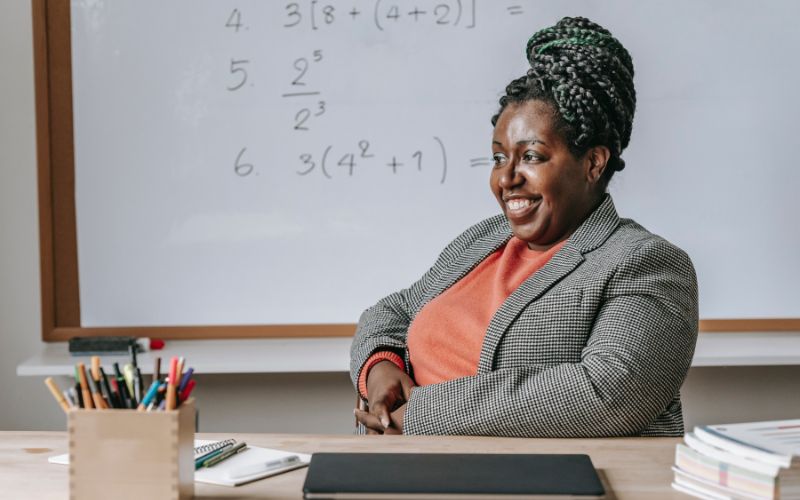
In the following blog, we share tips on how to improve teacher confidence in order to positively influence school culture. Culture dictates ‘how we behave and how we treat others’, it is important for school leaders to look at when combating peer on peer harassment and abuse.
How can Staff Nurture a Positive School Culture?
Staff do a lot to influence the culture within a school, in ways that may not be obvious. Here are a few ways that through building teacher confidence, staff in schools can proactively nurture a more respectful and empathetic culture:
Staff can model open respectful behaviour with other colleagues and to pupils
Pupils notice and are influenced by the way teachers interact with other colleagues and pupils. Some pupils may not see positive modelled behaviour at home and therefore, so it is even more important that they are seeing this within school. Staff set the tone for how we communicate and how we treat each other, aim to model openness, patience, good listening skills and non-judgement.
Staff can allow pupil voice to be heard
Pupil voice means different things to different people. For some schools it means sending a survey out to pupils once a term. That has a place for understanding how pupils are feeling, however research shows that young people overwhelmingly want to talk about the complexities of life, crucially to do so with their peers.
In doing so pupils develop vocabulary around relationships and personal reflection skills. Pupils want the freedom to discuss these things in a safe space with a teacher, who takes the role of facilitator, in a way that is without judgement and shame. We can create opportunities for pupils to have their voices heard from in classrooms, school council, anonymous question boxes etc.
Staff can surface and explore negative behaviour together as a peer group
Culture change and positive reinforcement can happen from the bottom up as well as top down, this is possible when pupils are aligned on what is and what isn’t acceptable behaviour. They are then well placed to call each other out for crossing that line, ‘that’s not how we treat each other here’.
This can be achieved by surfacing normalised negative behaviours that go unspoken about, for example the ‘non-consensual sharing of nude pics’.
By using scenarios we can develop empathy for one another, across genders. An example of a question to pose to your students could be ‘why do you think a boy would share that pic with his friends’, ‘how do you think the girl in the photo would feel if she knew it had been shared’, ‘how would she feel about the boy that shared it’?
Pupils begin to challenge their own beliefs, tackle misinformation and feel more comfortable in making disclosures.
Yet, this is often not happening because staff do not feel confident to have these discussions.
Why do Staff not Feel Confident?
Below are some of the more common reasons teachers have shared:
- Unclear how to set appropriate boundaries
- Struggling with limited time to do a discussion justice
- Pupils lack skills to have these conversations
- Lacking in facilitation training
- Nervous around banter
- Finding it hard to keep pupils focussed on the discussion
- Unsure how to challenge problematic views
Therefore, how can we help improve teacher confidence so staff members feel more inspired to be part of this change?
4 Steps to Improving Teacher Confidence
1. Teachers don’t need to know everything
Often as teachers, we feel we have to be the font of all knowledge and that pupils are expecting us to have all the answers. When it comes to relationships, we are all constantly learning! There might be things that pupils know better than teachers and that’s also fine. We can change the dynamic within the classroom to create an environment where we learn together (teacher and pupils) rather than presenting all the information to pupils.
2. Use distancing methods
The use of videos, news topics and other forms of media, helps teachers to distance the conversation to bring in other voices. It might not be appropriate to talk about our experiences within relationships (depending on what it is and how comfortable we feel) because we need to have professional boundaries in school, but we can talk about other examples/experiences and facilitate the conversations in a safe way. This is one reason why teachers value Life Lessons because they use the students’ voices in the videos to distance themselves from the conversation which as a result improves teacher confidence. This also doesn’t put the pupils on the spot as they can also talk with this distance.
3. Whole school approach
Teachers feel most supported when there is a clear message that comes from the leadership team. This then filters down to teachers who can feel supported and encouraged to ensure high expectations. As a result, pupils are aware of what is and is not acceptable. The key here is that all teachers are sending the same message to pupils.
4. Invest in teacher bitesize CPD
Invest in professional development and opportunities for teachers to share learning between colleagues. Whether it’s 30 minute twilight training or during INSET day, teachers should receive training on child on child abuse, how to manage more difficult discussions and how to teach RSHE. By upskilling our teachers, we allow pupils to report incidents, pupils to feel safe to share and teachers who feel confident to talk about more difficult topics with the pupils.
Check out our next blog: Why Positive Culture Needs to be a Strategic Priority in Schools
If you would like to know more about creating positive peer cultures within your school, upskilling your teachers or improving pupil voice:
